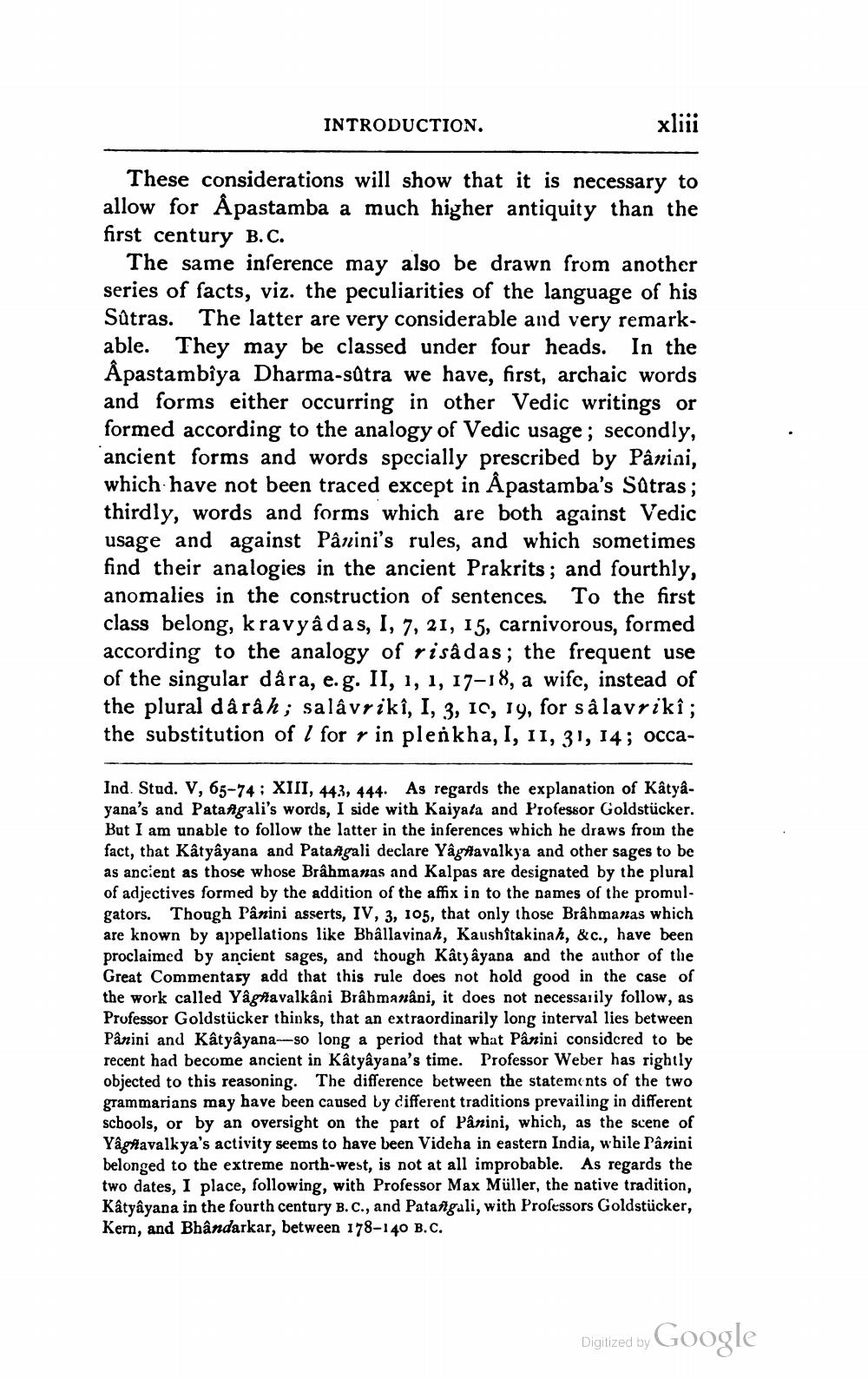________________
INTRODUCTION.
xliii
These considerations will show that it is necessary to allow for Åpastamba a much higher antiquity than the first century B.C.
The same inference may also be drawn from another series of facts, viz. the peculiarities of the language of his Sûtras. The latter are very considerable and very remarkable. They may be classed under four heads. In the Åpastambîya Dharma-sútra we have, first, archaic words and forms either occurring in other Vedic writings or formed according to the analogy of Vedic usage ; secondly, ancient forms and words specially prescribed by Pânini, which have not been traced except in Åpastamba's Sätras; thirdly, words and forms which are both against Vedic usage and against Panini's rules, and which sometimes find their analogies in the ancient Prakrits; and fourthly, anomalies in the construction of sentences. To the first class belong, kravyâdas, I, 7, 21, 15, carnivorous, formed according to the analogy of risadas; the frequent use of the singular dâra, e.g. II, 1, 1, 17–18, a wife, instead of the plural dârâh; salâvrikî, I, 3, 10, 19, for sâlavriki; the substitution of l for r in plenkha, I, 11, 31, 14; occa
Ind. Stud. V, 65-74; XIII, 443, 444. As regards the explanation of Kâtyayana's and Patangali's words, I side with Kaiyata and Professor Goldstücker. But I am unable to follow the latter in the inferences which he draws from the fact, that Kâtyâyana and Patañgali declare Yagniavalkya and other sages to be as ancient as those whose Brâhmanas and Kalpas are designated by the plural of adjectives formed by the addition of the affix in to the names of the promul. gators. Though Pânini asserts, IV, 3, 105, that only those Brâhmanas which are known by appellations like Bhâllavinah, Kaushitakinah, &c., have been proclaimed by ancient sages, and though Kâtyâyana and the author of the Great Commentary add that this rule does not hold good in the case of the work called Yâgħavalkâni Brâhmanâni, it does not necessarily follow, as Professor Goldstücker thinks, that an extraordinarily long interval lies between Panini and Kâtyâyana--so long a period that what Panini considered to be recent had become ancient in Kâtyâyana's time. Professor Weber has rightly objected to this reasoning. The difference between the statements of the two grammarians may have been caused by different traditions prevailing in different schools, or by an oversight on the part of Panini, which, as the scene of Yâgħavalkya's activity seems to have been Videha in eastern India, while Panini belonged to the extreme north-west, is not at all improbable. As regards the two dates, I place, following, with Professor Max Müller, the native tradition, Kâtyâyana in the fourth century B.C., and Patañgali, with Professors Goldstücker, Kern, and Bhandarkar, between 178-140 B.C.
Digitized by Google




